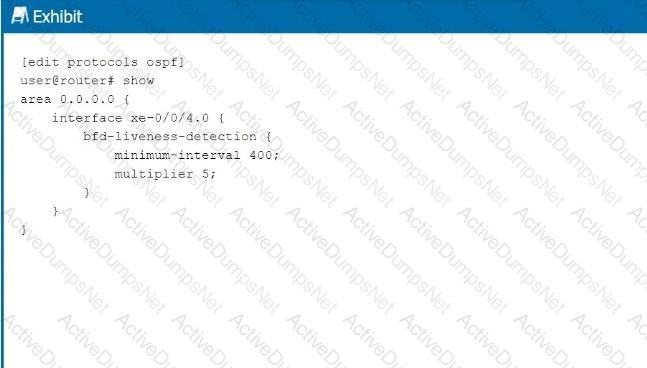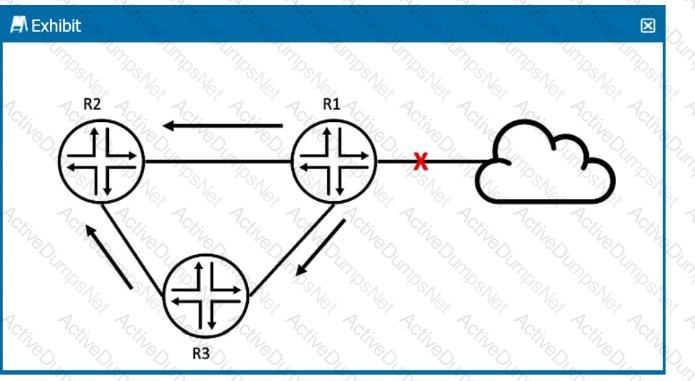What is the primary purpose of an IRB Layer 3 interface?
Which statement is correct about the BGP AS path when advertising routes?
Exhibit:

Referring to the exhibit, at which interval will the interface be considered down if no hello packets are received?
Which two statements are true about how switches handle Layer 2 traffic? (Choose two.)
You want to minimize topology disruptions in your network when the rpd process restarts on a device. Which service would accomplish this task?
What is the default route preference of a static route in the Junos OS?
You are configuring an aggregate route. In this scenario, which two statements are correct? (Choose two.)
What is the behavior of the default export policy for OSPF?
Which two statements are correct about aggregate routes and generated routes? (Choose two.)
Exhibit:

R2 received an OSPF update from R1, and it received the same update from R3.
Referring to the exhibit, what will R2 do?
Which two statements about IBGP are correct? (Choose two.)
Which statement about switches is correct?
Which state in the adjacency process do OSPF routers check the MTU size?
Which signaling protocol is used for EVPN?
A switch receives a frame with a MAC address of FF-FF-FF-FF-FF-FF. Which action will the switch take on this frame?
You want to enable a Junos device to support aggregated Ethernet interfaces. In this scenario, which configuration hierarchy would you use?
When a MAC limiting violation occurs, the switch performs which two actions by default? (Choose two.)
Which static routing parameter will silently drop the packet if it is set as the next hop?
Layer 2 interfaces operate in which two modes? (Choose two.)